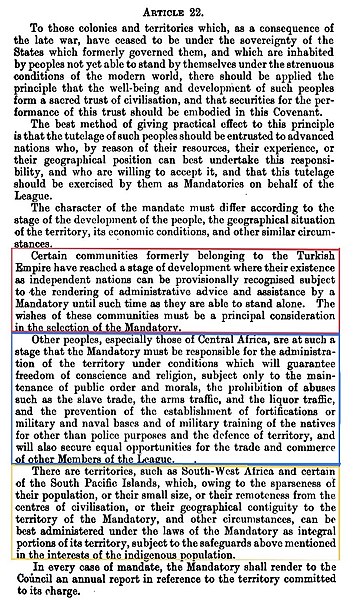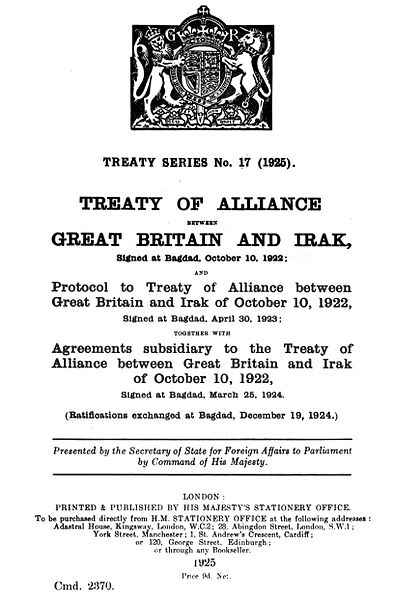United Nations trust territories
The United Nations trust territories were the successors of the remaining League of Nations mandates, and came into being when the League of Nations ceased to exist in 1946. All the trust territories were administered through the United Nations Trusteeship Council and authorized to a single country. The concept is distinct from a territory temporarily and directly governed by the United Nations.
Palau District Police greet the UN Visiting Mission to the Trust Territory of the Pacific Islands (1973)
Arrival of UN Visiting Mission in Majuro, Trust Territory of the Pacific Islands (1978). The sign reads "Please release us from the bondage of your trusteeship agreement."
League of Nations mandate
A League of Nations mandate represented a legal status under international law for specific territories following World War I, involving the transfer of control from one nation to another. These mandates served as legal documents establishing the internationally agreed terms for administering the territory on behalf of the League of Nations. Combining elements of both a treaty and a constitution, these mandates contained minority rights clauses that provided for the rights of petition and adjudication by the Permanent Court of International Justice.
Article 22 of the Covenant of the League of Nations, highlighting the three mandate classes: Red: Class A (ex Ottoman) Blue: Class B (ex German Central Africa) Yellow: Class C (ex German South West Africa and Pacific)
Image: Anglo Iraq Treaty 1922
Image: Mandate for Syria and the Lebanon
Image: Belgian Mandate for East Africa






